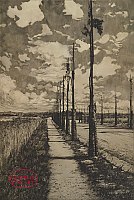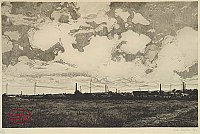 |
|
Richard Müller1874 – 1954 |
|
|
Click on a picture for more details |
|
|
The etched works of Austrian artist Richard Müller (often written as Richard Muller) have been the subject of a considerable resurgence of interest during recent years. The most brilliant pupil of Max Klinger, Richard Müller won the Prix de Rome in 1897 for his etchings and a gold medal at the Paris Exposition of 1900, being appointed that same year as Professor at the Dresden Academy. Extremely influential during the majority of his life, Richard Müller is regarded as the father of the Neue Sachlichkeit (New Objectivity) movement, established in direct opposition to the Expressionists, and was the teacher of both Georg Grosz and Otto Dix. Disliked by his colleagues for his personal rigidity and by the Nazis, who did not approve of his art, he was forced to resign from his post as Director of the Academy in 1935, despite being idolised by most of his pupils. The Nazis proceeded to suppress his work and Richard Müller’s achievements have remained in obscurity until comparatively recent years. He is now regarded as one of the crucial figures in German and Austrian art during the first half of the 20th century. Richard Müller’s art is a form of Romantic Symbolism which shares the appearance of sharp reality found in Klinger’s work, whilst bordering between the conscious and subconscious in much of its imagery. [more] |




